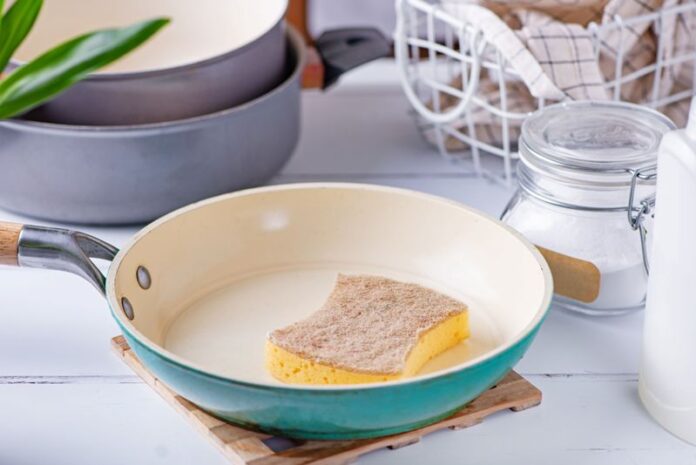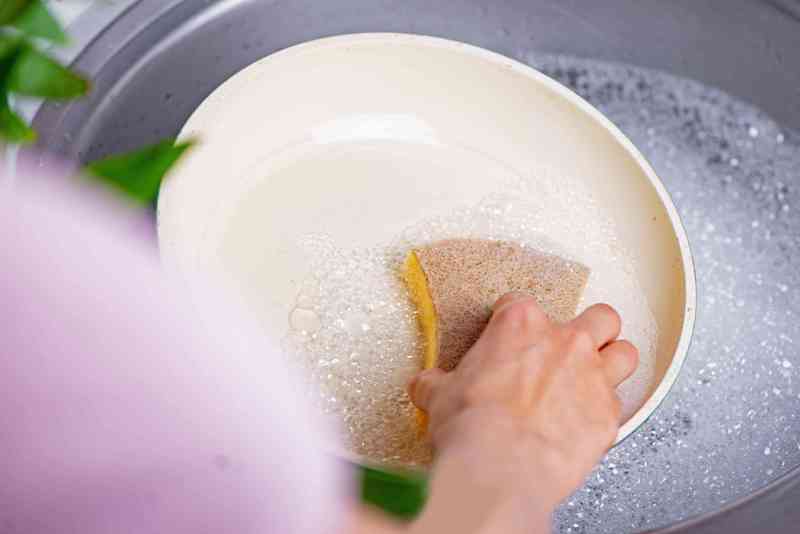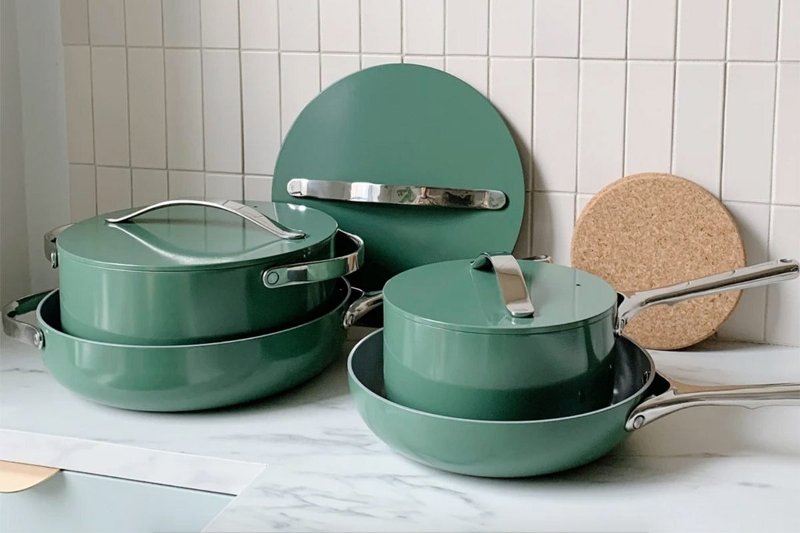Ceramic cookware is an excellent alternative to nonstick cookware, despite its higher price. Ceramic cookware is an excellent investment as it cooks evenly, uses less oil while cooking, and doesn’t contain harmful chemicals.
Ceramic pans are easy to clean and maintain, thanks to the nonstick coating. You can extend the life of ceramic pans by taking good care of them and enjoying years of service.
1. Washing ceramic pans
Use a soft sponge to wash your ceramic pans regularly. Allow the pan to cool completely after each use. To thoroughly clean the pan, use a dishcloth or soft sponge with warm soapy water.
It would be best if you did not use nylon, steel wool, or any other abrasive cleaners on ceramic pans, as they could cause damage to the coating.
Some manufacturers recommend that you place ceramic pans in the dishwasher. However, washing them only by hand will prolong the product’s life.
2. To remove burned food, soak the ceramic pan for 30 minutes in hot water.
Letting the pan soak will loosen the food and make it easier to wipe with a sponge or cloth.
You can add 1 cup (240mL) vinegar to the saucepan and bring it to boil on low heat. Let it cook for about 3-5 minutes before turning off the heat. Let the solution cool, then wipe out the food with a sponge or a cloth.
3. Use warm water to rinse the ceramic pans.
Make sure you rinse out any food particles or soap traces. If food is not washed, rinse the pan with soap and water again.
4. To remove stubborn stains, you can sprinkle baking soda on your ceramic pan.
Sprinkle baking soda generously over stained areas while the pan is still damp. Let the baking soda sit for about 15-20 minutes before you scrub the pan with a soft-bristled dish brush.
Use warm water to rinse the pan and dry it thoroughly.
5. Allow ceramic pans drying to complete.
After the pan has been washed, rinsed and dried, dry it with a dish towel or paper towel. The pan can be dried on a rack or in the air.
Care for ceramic pans
1. Before the first use, wash ceramic pans in warm soapy water.
To remove any dust or particles, wash the pan carefully from its packaging. Products can come into contact with chemicals and bacteria during manufacturing or shipping. Therefore, it is essential to clean the pan before you start cooking thoroughly.
After washing the pan, dry it with paper towels or a dishtowel.
2. To avoid damaging your ceramic saucepan, use proper cookware.
Nylon spoons and spatulas can be made from silicone, wood, plastic or silicone-based materials. The coating can be scratched by metal cookware, leading to inadequate heating and cooking results in the future.
Knives can damage the ceramic coating, so it’s essential not to cut food still in its pan.
3. To protect your pan, use butter or oil while you cook
Only use enough butter or oil to coat the pan evenly. To prevent food from sticking to the pan and avoid making greasy messes, use a small amount.
Nonstick cooking sprays should not be used as they can cause a buildup of residue and can also cause damage to the pan.
Ceramic pots and pans should not contain extra virgin olive oil. The oil is not able to withstand high heat and will create a carbonized layer within the pan.
4. Use low to moderate temperatures to cook food
The high heat can cause food to stick to the pan, leading to color and other problems. It is best to heat butter or oil on low heat before adding the food.
5. Before washing ceramic pans, let them cool completely.
Extreme temperature changes, such as putting hot pans in cold water, can cause damage to the nonstick coating. It may seem tempting to wash dishes quickly after cooking, but it is best to wait for your ceramic pan to cool down before cleaning them.
6. To avoid any damage, keep ceramic pans out of reach from other pots and pans.
Ceramic pans placed on top of ceramic pans can scratch the coating and cause them to crack. Your ceramic cookware should be stored on its own on a hook or a shelf.
If space is a problem, you can place a napkin or small dishcloth between the pans to prevent them from slipping.




















